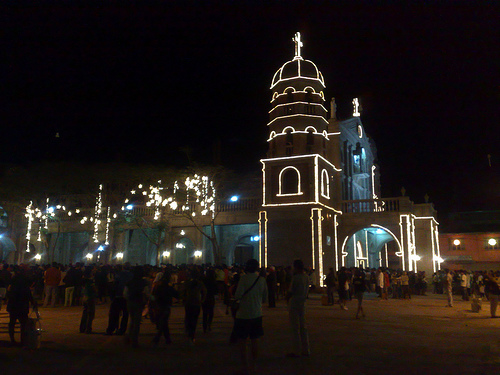This post is from a note written by Sandy Tan, a childhood friend from Padada, Davao del Sur. He was actually reminiscing about people, places, events, and other things from our town. I tried to translate this to English but the resulting prose lost the richness and the undertones of the Cebuano dialect. So, I kept its original language.
Here it goes.

Kahinumdum ka pa ani?
30 centimos pamasahe sa una, kabit libre pa?
Babae ra gyud ang naay ariyos?
Mga piniriso ra ang naay tattoo?
Ang sabot nimo sa LOL kay ULOL?San Pedro o Claveria ang shoppinganan sa Davao?
60 centimos ra ang BBQ ug Piso ang isa ka BOL nga kinutil ila Balending?
Kusog ka mokaon ug binignit ila Nene Idea ug?
Chocnut ang imo paborito…usahay Sergs kung naa kay kwarta?Ang mantika sa baboy maoy ibahug sa kan-on?
Ga-atang sa palengke kay maghinalang kada sabado sa gabii?
Familiar ka ug unsa ang “Underwood” nga brand…unya gamit ka pa carbon paper?
Sulod palengke tigpalit ug Tancho, X-7, o brillante para pampapogi o pangpagwapa?Darigold ang imo ginainum usa ka matulog?
Piso lang…daghan ka na mapalit sa palengke…apil pa siopao ila Marcial?
Mosugo ka pa ug tao para motawag sa imo amigo kay wala may telepono?
Puniton ang lata kay himoong tarak-tarak…unya pik-on ang papel para himoong pusil-pusil?Dili mahuman ang adlaw kung dili makabasa ug Liwayway, Bisaya, Hiwaga…song hits pud?
Masuko ka kung sawayon ang ilong ni Vilma kay lapad man?
Kada tindahan gagunit ug Red Cross Ticket?
25 centimos lang ang gupit ila Apyong?
Ginasinggitan si junior ug “BUANG!!!”?Ang pantalon ug palda naka ARMIROL…tuskig pa sa tuyom?
Maulaw ka kung gabitay imo Halfslip, pero karon kita na PANTY UG PUSOD?
Ginakantiawan ang mga BAYOT sa una?
Boring ang tawag sa GRO?Payat ka pa sa una?
Taga-Limonzo pa ang tawag sa taga-Padada
Daghan pa ka ug buhok kaniadto?
Combo, songhits pwede na, binuntagay na sa barkada?Gaharana o ginaharanahan ka pa?
Tuba pa imo gina-inum?
$1 = 4 Peso?Kung nakahinumduma ka pa ani…TIGULANG ka na!!!



